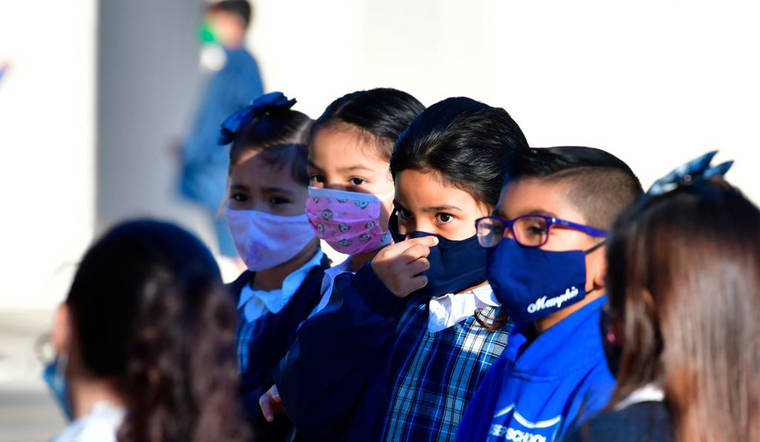When it comes to her daughter Emerson’s education, Sarrin Warfield says, she’s “in it to win it.”
When Emerson’s assigned school in South Carolina announced plans for virtual learning this fall, Sarrin says she asked herself, “What if we just made this in my backyard and made a school?” After talking with friends who have children the same age as Emerson, Sarrin said, “Let’s do it. Instead of it being a crazy idea, let’s own this process and be really intentional about doing this and make it happen.”
Sarrin is one of the thousands of parents around the country who formed learning pods when assigned schools closed. By meeting in small groups with friends’ and neighbors’ children, these pod families could try to keep at least one of part of their child’s life from being upended because of COVID-19.
The time-honored practice of school assignment did little to help the Warfields — or thousands of other students around the U.S. during the COVID spring … and then COVID summer and fall. In the beginning of the 2020-2021 school year, officials in some of the largest districts in the country reported significant enrollment changes from the previous school year, especially among younger students.
Officials in Mesa, Arizona, reported a 17% decrease in kindergarten enrollment after the first two weeks. In Los Angeles, Superintendent Austin Beutner reported a 3.4% decrease in enrollment, but said another 4% of students couldn’t be found, making the change closer to 7%. Figures are similar in Broward County, Florida, and Houston. In large school districts, these percentages amount to over 10,000 children per district.
Some of these changes can be attributed to learning pods. But officials in large cities and even those representing entire states simply reported having no contact with many students.
Under normal circumstances, if thousands of children who were once in school suddenly were nowhere to be found, this would be an issue of national concern. Hearings would be held, and officials would demand to know what is happening with schools around the country. Loud calls for change would be heard.
But life during the pandemic is anything but normal.
Likewise, if more students around the country were failing — say, twice the figure from last year — this would also be worrisome, right? From Los Angeles to Houston to Chicago to Fairfax, Virginia, school officials and researchers are now reporting that the proportion of students earning D’s and F’s in the first semester has increased, doubling in some cases, in comparison to the last school year.
Yet across the U.S., many school districts, especially those in large metro areas, still remain closed to in-person learning for some if not all grades and may not reopen at the start of 2021.
According to the Pew Research Center, 72% of parents in lower-income brackets report being “very” or “somewhat” concerned this fall that their children are “falling behind in school as a result of the disruptions caused by the pandemic.” With thousands of students not in class, even virtually, and falling grades among those who are attending, who can blame them?
For taxpayers and policymakers looking for lessons in the pandemic, the utter failure of school assignment systems to provide quality-learning options to all students, especially the most vulnerable, is clear.
The quality and consistency of the education a child received during the pandemic has been dependent on the attendance boundary in which that child’s family lives. At the same time, so many of the issues plaguing education during the pandemic — and for that matter, the entire century leading up to the pandemic — are rooted in policies that fund school systems, rather than individual students.
Allowing dollars to follow children directly to any public or private school of choice is a critical emergency policy reform that states should pursue. Such a policy change is overdue.
Since it’s anyone’s guess how soon life will get back to normal, we can’t wait any longer for the system to fix itself.
Jonathan Butcher is a senior policy analyst in Heritage’s Center for Education Policy. Center Director Lindsey M. Burke, Ph.D., is Heritage’s Will Skillman Fellow in Education.



